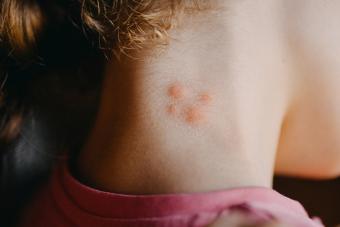
Recognizing Vitiligo
Vitiligo is a benign skin disorder that causes patches of skin to become lighter than surrounding areas. Vitiligo is a type of leukoderma, a condition involving the lightening of patches of skin. ("Leuko-" means "white," and "derma" refers to the skin.) It often begins subtly, with one or more areas of skin appearing a little pale. The patches are usually small and sharply defined. They may be mildly itchy. The patches continue to lighten gradually, until the skin appears much lighter than surrounding areas.
Over time, the patches also grow and spread, so that smaller patches join to form larger ones with irregular shapes. They may progress to cover a large area of the body. Or, they may remain stable, with the oddly shaped white patches remaining the same for many years.
Except for the color change, the skin appears normal. In later stages, the white patches do not itch, and they are never painful. Sometimes, the hair in that area turns white as well.
Commonly Affected Areas
This skin disorder often affects the face, neck, and scalp. When the scalp is involved, patches of hair may turn white. White patches can appear in the eyebrows, too. Other commonly affected areas include skin folds, like the armpits or groin, and sun-exposed areas including the fingers, the arms, and the backs of the hands. The skin around body orifices, such as the mouth, the nostrils, or the genitals, is also often involved.
Patterns
The white patches of skin can appear in one of several patterns.
In localized vitiligo, skin changes can appear:
- In one small area, with just one or a few pale patches
- In a segmental pattern, covering a wedge-shaped area on the back, stomach, or chest; affecting one limb or one part of an arm or leg; or discoloring one section of the face
- Just on mucus membranes, such as the lips
In generalized vitiligo, pale areas can be:
- In a pattern involving the hands, feet, and face
- Scattered in variously sized patches across the entire body
- Large and confluent, so that most of the body is affected
The patterns need not be mutually exclusive. For example, scattered patches may appear in addition to fully-affected hands.
Causes
No one knows for sure what causes vitiligo. It appears to be an autoimmune disorder, meaning that the body's immune system mistakenly attacks is own cells. In this case, the immune system destroys the cells which give skin its color, also called pigment. The loss of color is called "depigmentation."
Doctors think that there may be other causes involved as well. There is probably a genetic component, since about one third of people who are affected have family members who also have vitiligo.
Who Is Affected
The loss of skin color can happen to anyone. As many as 2% or people may develop this disorder. It tends to appear first during young adulthood and is rare in babies and in the elderly. Men and women are affected equally.
When to See the Doctor
More serious diseases can mimic this benign condition, so it's important to have a doctor confirm the diagnosis. A simple test with a light called a Wood's Lamp can help identify the disorder. In a few cases, a biopsy will be needed to be certain.
Skin disorders that can resemble this harmless discoloration include:
- Fungal infections
- Skin cancer
- Tuberous sclerosis (a genetic disorder)
- Leprosy
In addition, this disorder can be associated with other serious conditions, including diabetes and thyroid problems. A doctor can help you determine if you need to be tested.
Treatment
Every patient responds differently to treatment. It may take several tries to find the treatment that works for you.
- Phototherapy. Special lights can help restore pigmentation to the skin. These treatments use specific wavelengths of light and must be repeated regularly.
- Steroids. Either taken by mouth or applied to the skin, prescription steroids may help reverse the changes. However, in most cases they should be used only short-term to avoid serious side effects.
- Tacrolimus. Tacrolimus (brand name Protopic) reduces the activity of the immune system. This prescription medicine is applied as an ointment.
- Surgery. Surgical treatments are used only for small, stable areas. Colored skin from another place on the body is grafted over the depigmented area.
- Tattooing. Small areas can be tattooed to make them less noticeable. However, it's difficult to match skin color exactly.
- Depigmentation of surrounding skin. In extreme cases, in which most of the body is affected, bleaching or other treatments can be used remove the color from the non-affected skin.
For More Information
- The vitiligo page at the National Institute of Arthritis and Musculoskeletal and Skin Diseases
- The vitiligo section of MayoClinic.com
.







